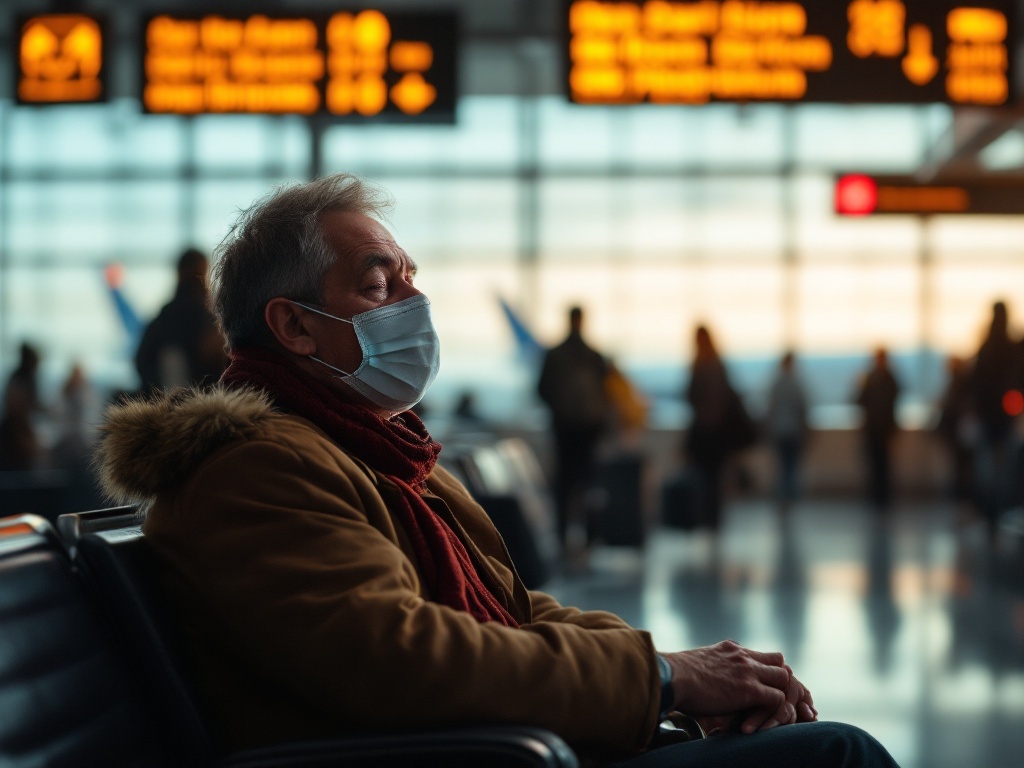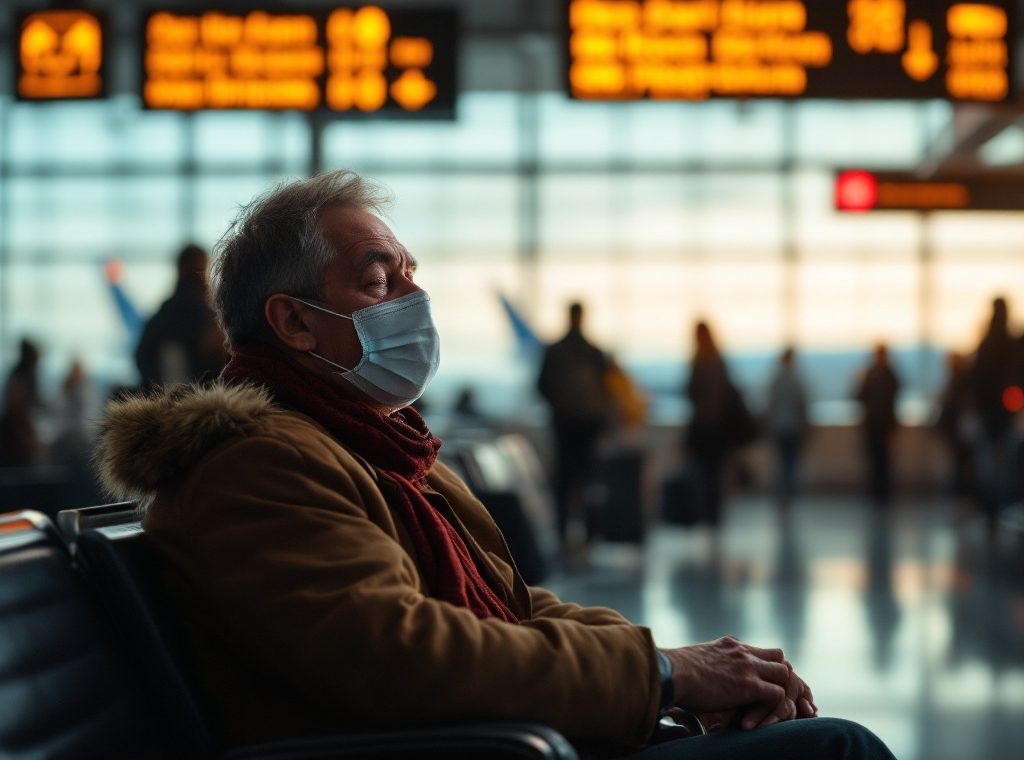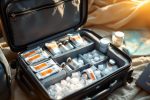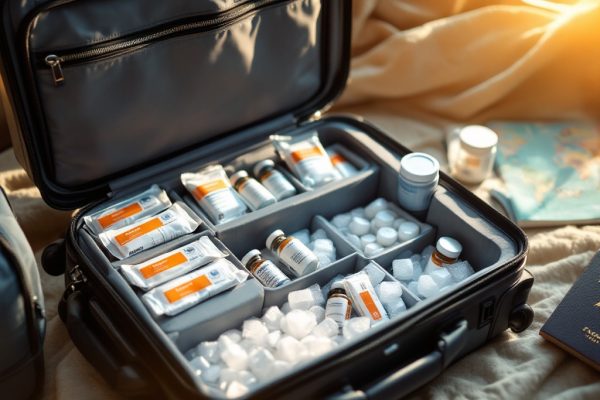Can You Travel With Pneumonia: Risks and Recommendations
Planning a trip while recovering from pneumonia? Air travel with pneumonia can worsen symptoms like breathing difficulties and fatigue due to cabin pressure and low oxygen levels. It can even lead to serious complications like respiratory failure and poses an infection risk to other passengers. Before you fly, consult your doctor for a health assessment and discuss potential risks. Discover how to prioritize your health and explore safer travel alternatives in this essential guide.
Important information

- Avoid air travel with pneumonia. If flying is unavoidable, consult your doctor first.
- Cabin pressure changes and low oxygen levels can worsen pneumonia symptoms, leading to serious complications like hypoxia and respiratory failure.
- Flying with pneumonia poses a risk to other passengers due to the potential spread of infection.
- Consult your doctor before flying after recovering from pneumonia, and wait 2-3 weeks for full recovery. A fit-to-fly test and medical certificate might be necessary.
- If you must fly while recovering, stay hydrated, practice good hygiene, avoid crowds, and ensure access to medical care at your destination.
Understanding Pneumonia and Air Travel Risks
Traveling by air with pneumonia, a lung infection, can be risky. Cabin pressure and low humidity may worsen breathing difficulties and fatigue. Before flying, consult your doctor. Discuss a health assessment and potential risks, including spreading the infection to other passengers. Protecting your health and the health of others is crucial.
How Pneumonia Affects Air Travel
Flying can worsen pneumonia symptoms. The changes in cabin pressure and reduced oxygen levels can make breathing difficult and uncomfortable. Dry air further irritates the lungs.
Traveling while sick also risks infecting fellow passengers. Therefore, avoid air travel with pneumonia. If flying is absolutely necessary, consult your doctor first.
Why Flying with Pneumonia is Dangerous
Air travel with pneumonia poses risks due to cabin pressure changes that can reduce blood oxygen levels, leading to hypoxia. This condition further complicates breathing and exacerbates pneumonia symptoms. The reduced air pressure hinders oxygen absorption in already infected lungs, potentially causing serious complications like respiratory failure. However, flying can be safe for some individuals with pneumonia if they take appropriate precautions and consult their doctor beforehand. This consultation is essential for ensuring safe travels. Always consult your doctor before flying with pneumonia to assess your specific condition and determine the safest course of action. They can advise on necessary precautions, medications, and whether supplemental oxygen is required during the flight.
Assessing Your Fitness to Fly with Pneumonia
Flying with pneumonia can be risky, so consult a healthcare professional. They can assess your condition’s severity and determine if air travel is safe. You might need a fit-to-fly test and medical certificate to ensure passenger safety and manage potential in-flight health issues. Your doctor can guide you through these requirements.
General Recommendations
Generally, flying with pneumonia isn’t recommended. Cabin pressure changes and low humidity can worsen symptoms. The exertion of airport travel can also be problematic.
Doctor’s Consultation
Before flying, always consult your doctor. They can assess your fitness for air travel and explain the potential risks. Prioritizing your health is crucial.
Consultation with Healthcare Professionals
A healthcare professional will assess your health and provide personalized advice for air travel, ensuring you can make safe travel decisions tailored to your specific needs.
Fit-to-Fly Tests and Medical Certificates
Fit-to-fly tests evaluate your health status for air travel, often involving oxygen level assessments. After experiencing pneumonia, obtaining a medical certificate confirming your fitness to fly is typically required by airlines. Consult your doctor for personalized advice.
Should You Fly with Pneumonia?
Individuals with pneumonia should avoid air travel. It’s advisable to wait two to three weeks after recovery before flying. Airlines often restrict passengers with this illness to safeguard the health of everyone onboard.
Risks and Complications of Air Travel with Pneumonia
Air travel can worsen pneumonia symptoms due to the lower cabin pressure and reduced oxygen levels, potentially increasing shortness of breath and discomfort. The high altitude can induce hypoxia, making breathing difficult and possibly causing respiratory distress. Dry cabin air further irritates the lungs, often triggering more coughing.
Flying with pneumonia carries the risk of serious health complications, including respiratory failure, sepsis (a severe infection response), and even a collapsed lung (pneumothorax). Moreover, the added stress of travel can worsen symptoms and prolong recovery.
Traveling with this illness also poses a risk to fellow passengers. Close proximity on the plane increases the likelihood of transmitting pneumonia and other infections. Your weakened immune system also makes you more susceptible to catching new illnesses from others on board.
Carefully weigh these risks before deciding to fly with pneumonia.
Respiratory Symptoms and Hypoxia
Flying with pneumonia can worsen your symptoms and pose health risks. The lower cabin pressure in airplanes reduces oxygen levels, which can exacerbate shortness of breath for someone already experiencing pneumonia symptoms. The dry air in the cabin can further worsen breathing difficulties. Additionally, pressure changes during ascent and descent can cause ear and sinus pain, adding to the overall discomfort. Therefore, it’s generally recommended to avoid flying with pneumonia.
Potential Health Complications
Flying with pneumonia can be risky, potentially leading to serious health complications like respiratory failure, sepsis, or a collapsed lung. The changes in cabin pressure can worsen breathing difficulties, and the stress of travel can exacerbate fatigue and other pneumonia symptoms. Additionally, traveling with pneumonia poses an infection risk to other passengers. Therefore, it is generally recommended to avoid air travel until you have recovered.
Infection Spread Concerns
The close proximity of passengers on airplanes, combined with recirculated air and limited ventilation, facilitates the spread of airborne illnesses like pneumonia. This creates a public health risk as infections can easily spread through coughs and sneezes, potentially infecting numerous other travelers.
Alternative Travel Options for Pneumonia Patients
Traveling with medical conditions can present unique challenges, but airlines offer various solutions to ease the journey. For passengers requiring assistance, here’s a breakdown of the available options:
Wheelchair Assistance and Priority Boarding
these services are commonly offered by airlines to facilitate smoother travel for passengers with mobility limitations, providing convenient airport navigation and early access to the aircraft.
Escorted Medical Transport
For more complex medical needs, this service offers in-flight care, ensuring a safe and comfortable trip for passengers requiring medical supervision during their journey.
Air Ambulances
Equipped with advanced medical equipment and trained personnel, air ambulances are essential for patients with serious medical conditions such as pneumonia.
Sea Level Cabin Pressure
A key advantage of air ambulances is their capacity to maintain cabin pressure similar to ground level. This feature minimizes strain on the respiratory system, making them a safer option for patients with respiratory illnesses.
Commercial Flight Policies and Special Assistance
Airlines prioritize passenger safety and typically deny boarding to individuals with active pneumonia due to its contagious nature. While airlines offer assistance, such as wheelchairs, for various medical conditions, infectious illnesses are handled differently. These policies are in place to protect your well-being and the health of other passengers.
Arranging Medical Transport and Escorts
Medical transport services use specially equipped vehicles to provide essential patient care, including oxygen and medical professionals. A nurse or paramedic escorts the patient, offering continuous monitoring and assistance. This personalized approach minimizes the risks associated with commercial flights, especially for patients with severe conditions like pneumonia. For longer distances, air ambulances are available. Ground ambulances cater to shorter trips.
Benefits of Air Ambulance Services
Air ambulances offer a sea-level cabin pressure, significantly reducing strain on the respiratory system. This is especially beneficial for pneumonia patients sensitive to altitude changes. The constant presence of medical professionals ensures continuous monitoring and care during the flight, prioritizing patient safety and comfort.
Recommendations for Safe Travel Post-Pneumonia
Prioritize a full recovery from pneumonia before considering air travel. This recuperation period can last several weeks or even months, depending on the severity of your illness. Consult your doctor for personalized advice on when you can safely travel again. Explore travel insurance options that cover medical emergencies, offering protection throughout your trip.
Importance of Recovery Time and Monitoring Symptoms
Monitor your health and allow ample recovery time before air travel. If your condition worsens, seek immediate medical attention.
When to Consider Flying Again
Consult your doctor about air travel after pneumonia, as recovery times vary based on your health and the severity of your illness. Obtain medical clearance before flying.
Precautions to Take Before Flying
Staying well-hydrated is key for air travel. Drink plenty of fluids before, during, and after your flight to prevent dehydration. Before your trip, confirm access to medical care at your destination and try to avoid crowded areas. Practicing good hygiene, especially frequent handwashing, is crucial. Remember to pack all necessary medications and plan for sufficient rest and recovery time. If your doctor approves your travel, wearing a mask can offer added protection against infections and help prevent spreading illness to others. Here’s a helpful checklist for your trip:
- Hydration: Drink plenty of fluids before, during, and after your flight.
- Medical Care: Confirm access to medical care at your destination.
- Crowds: Avoid crowded areas whenever possible.
- Hygiene: Practice good hygiene, especially frequent handwashing.
- Medications: Pack all necessary medications.
- Rest: Plan for sufficient rest and recovery time.
- Mask: If your doctor approves, wear a mask for added protection.











